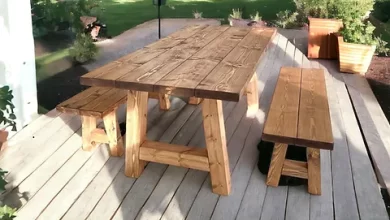The Importance of a Bird of Paradise Plant in Your House

Growing a Bird of Paradise plant is no easy task. These plants are not watered, fertilized, or pampered like most plants. In order for your Bird of Paradise to thrive, it’s important to know how to care for this little guy from the get-go. When you first receive your new plant, the journey has just begun. The real work begins now! Once you have removed the plant from the shipping container, there are some steps you will need to take in order to give it the best chance of survival and continued growth.
What is a Bird of Paradise Plant?
A Bird of Paradise plant is a tropical plant that is indigenous to Brazil. It has many different varieties that all have different textures and colors, but the classic Bird of Paradise is the red variety. These plants are grown for their exotic and colorful flowers.
There are many different varieties of these tropical plants and they come in a variety of colors including pink, red, orange, yellow, purple and maroon. Although they are tropical plants, they are easy to grow indoors. Growing a Bird of Paradise is a great way to add some color to your home. These plants are hearty, easy to care for, and attractive to look at.
How to Care for a Bird of Paradise Plant
– Light and Temperature – The very first thing you will need to do when you first receive your new plant is find a good place for it to live. The best place for your Bird of Paradise is an area that has bright, but indirect light. Direct sunlight will be too harsh for this delicate little plant and could cause it to wither and die. The next thing you will want to decide is how cold do you want to keep your house? A Bird of Paradise likes warm temperatures. Temperatures in the 70s are ideal. So, if you are like most people, you will want to find a place in your home that is neither too hot nor too cold.
– Soil – Next, you will want to think about the type of soil you will be using to plant your new Bird of Paradise. This plant is native to Brazil and so a soil that is tropical in nature is ideal. You can use a coconut fiber soil for this.
– Water – You will want to make sure that you do not water your new Bird of Paradise plant too much, or too little. The soil of the plant should dry out in between waterings. If the soil is soggy, then you have watered it too much. If the soil feels dry to the touch, then it needs water. In order to determine when you will need to water your plant again, take a look at the soil. If the soil is still moist, then it does not need water at the moment. If the soil is dry, then you will need to water your plant.
How to Grow a Bird of Paradise Plant
The best way to grow your Bird of Paradise is to start with a seedling. When you first receive your new plant, it will be in a small container. Your plant will be very small and delicate. If you want to grow a bigger plant, then you will need to start with a seedling. The first thing you will need to do is remove the plant from its current container. Once you have done this, you need to transplant it into a bigger container.
When choosing a new container for your plant, you will want one that is at least 6 inches deep and has a drainage hole in the bottom. Once you have a new container for your Bird of Paradise, you will want to fill it with a good loam soil. You will then want to water your soil until it is evenly moist. You will then want to place your seedling in the center of your container. Gently dig your fingers into the dirt and gently pull up your seedling. You do not want to yank the plant out of the old container.
Dangers of Owning A Bird of Paradise Plant
Bird of Paradise plants are poisonous to dogs and cats. If you have these animals in your home, you will either need to keep them away from the plant or you will need to take the plant out of your home when you are not home to keep them from eating the leaves, flowers, and roots.
Humidity levels in the home that are too high can cause your Bird of Paradise plant to wither and die. If you keep your home humid, then you will need to water your Bird of Paradise plant more often than you would if you kept your home dry. If your Bird of Paradise plant begins to dry out, the leaves will begin to shrivel. If your plant dries out completely, then you will need to throw it away.
Conclusion
If you follow all of the steps outlined in this article, there is a good chance that your Bird of Paradise plant will thrive. These are tropical plants and so they need warm temperatures and humid conditions in order to grow and thrive.
If you are able to provide these conditions for your new plant, there is a good chance that it will grow into a large and beautiful plant. If you have ever been curious about owning a Bird of Paradise plant, now is the time to do it. This plant is exotic and colorful. It will provide your home with a tropical feel and look and is easy to take care of.
References:
1-First Report of Leaf Spot and Blight Caused by Ralstonia pickettii on Bird of Paradise Tree in Italy
Published:4 Apr 2008
doi.org/10.1094/PDIS-92-5-0835A
2-Postharvest life of Bird-of-Paradise inflorescences
Published: 3 December 2007
doi.org/10.1016/j.postharvbio.2007.10.010








